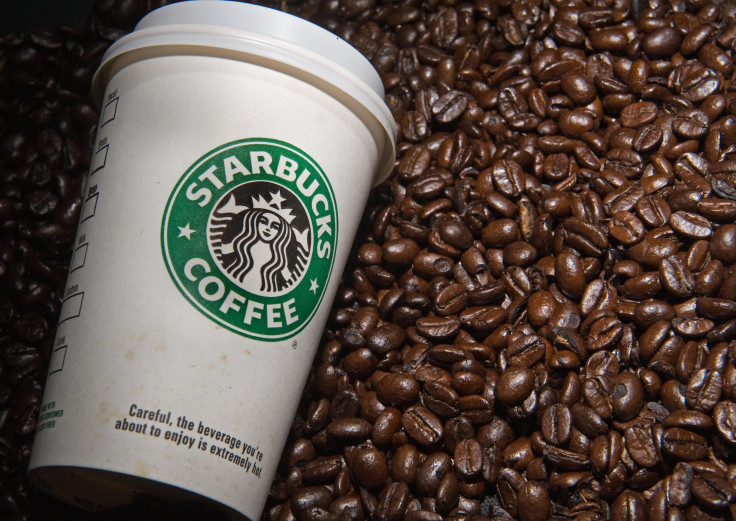Starbucks' Biggest Chinese Rival Just Filed For A US IPO

Starbucks (NASDAQ:SBUX) was once the hottest coffee chain in China. But a new domestic rival, Luckin Brands, has emerged as its top rival in just 18 months. Luckin has opened 2,370 outlets across 22 cities in that short time and plans to double its store count by the end of 2019.
Starbucks, by comparison, has opened about 3,700 locations in 150 Chinese cities over the past two decades. Luckin's meteoric growth prompted BlackRock (NYSE:BLK), one of Starbucks' top investors, to also take a stake in the Chinese start-up, which was valued at $2.9 billion after its last funding round.
That's why it wasn't surprising when Luckin recently filed for an IPO on the Nasdaq Stock Market. The Chinese company opted for the U.S. exchange because Hong Kong exchanges generally require three years of financial data be included as part of any IPO filing.
Reuters estimates that the offering could raise up to $800 million. Luckin plans to use the proceeds for "general corporate purposes," which could include the expansion of its store network, acquisition of new customers, and investments in its tech infrastructure.
Let's take a closer look at Luckin's growth metrics to see if it's a worthy investment.
How fast is Luckin Brands growing?
Luckin is currently the second-largest coffee chain in China after Starbucks. It operated three types of stores at the end of the first quarter -- 2,163 pickup stores, 109 "relax" locations, and 98 delivery kitchens. Its pickup stores are tiny 200- to 600-square-foot outlets with limited seating, its "relax" stores resemble traditional cafes, and its delivery kitchens serve online deliveries.
Luckin generated $125 million in revenue in 2018 and $71 million in the first quarter of 2019, which suggests that it could easily double or triple its revenue for the full year. Luckin generated 77% of its revenue from freshly brewed drinks in 2018. The rest came from "other" products, such as juices and light meals.
Luckin's top-line growth is impressive, but it posted a net loss of $241 million in 2018, which means it lost nearly $2 for every dollar it made. It posted a net loss of $82 million in the first quarter, which marked an improvement but still indicates that it won't generate a profit anytime soon.
Will Luckin's luck run out?
Luckin's main advantage is that its drinks are 20% to 30% cheaper than Starbucks' comparable products. Luckin also uses aggressive marketing campaigns featuring Chinese celebrities, while Starbucks generally shuns traditional ads. If Luckin hikes its prices or reduces its marketing spending to narrow its losses, it could lose its edge against Starbucks.
Luckin is also built from the ground up as a digital platform. Customers can't pay with cash -- they need to place orders through its mobile app, which processes payments with Tencent's (NASDAQOTH:TCEHY) WeChat Pay, stores loyalty points, and coordinates pickups and deliveries. It also offers special promotions on WeChat, the top mobile messaging app in China.
That digital-first strategy caught Starbucks off guard last year since it didn't offer any first-party delivery options. However, Starbucks subsequently partnered with Alibaba's (NYSE:BABA) Ele.me delivery service to solve that issue, and its Chinese comps returned to positive territory by the fourth quarter of 2018.
What's Luckin's long-term plan?
Luckin believes that two things will stabilize its long-term growth. First, it notes that its acquisition cost per new customer dropped from 103.5 RMB ($15.36) to just 16.9 RMB ($2.51) between the first quarters of 2018 and 2019. This means that it's dialing back its marketing efforts and loss-leading promotions as it increases its brand awareness.
Second, it believes that coffee consumption in China will surge from 8.7 billion cups in 2018 to 15.5 billion by 2023, which gives it plenty of room to grow. However, investors should note that forecast comes from Frost & Sullivan, a firm that previously released questionable market share numbers and growth forecasts for lesser-known Chinese companies ahead of their IPOs.
Luckin looks like a lemon -- for now
Luckin wants investors to focus on its rapid growth in revenues and trust that it will focus on profits later. That argument might work with hot tech IPOs, where tech companies can lock in customers by evolving and expanding their digital ecosystems, but it doesn't quite work in the capital-intensive restaurant sector.
Starbucks was unprofitable for years before its IPO in 1992, but it was firmly profitable by the time it went public. Luckin likely wants to follow Starbucks' lead, but I think its IPO is premature and a blatant attempt to cash in on the brand's recent publicity.
This article originally appeared in The Motley Fool.
Leo Sun owns shares of Tencent Holdings. The Motley Fool has no position in any of the stocks mentioned. The Motley Fool has a disclosure policy.




















